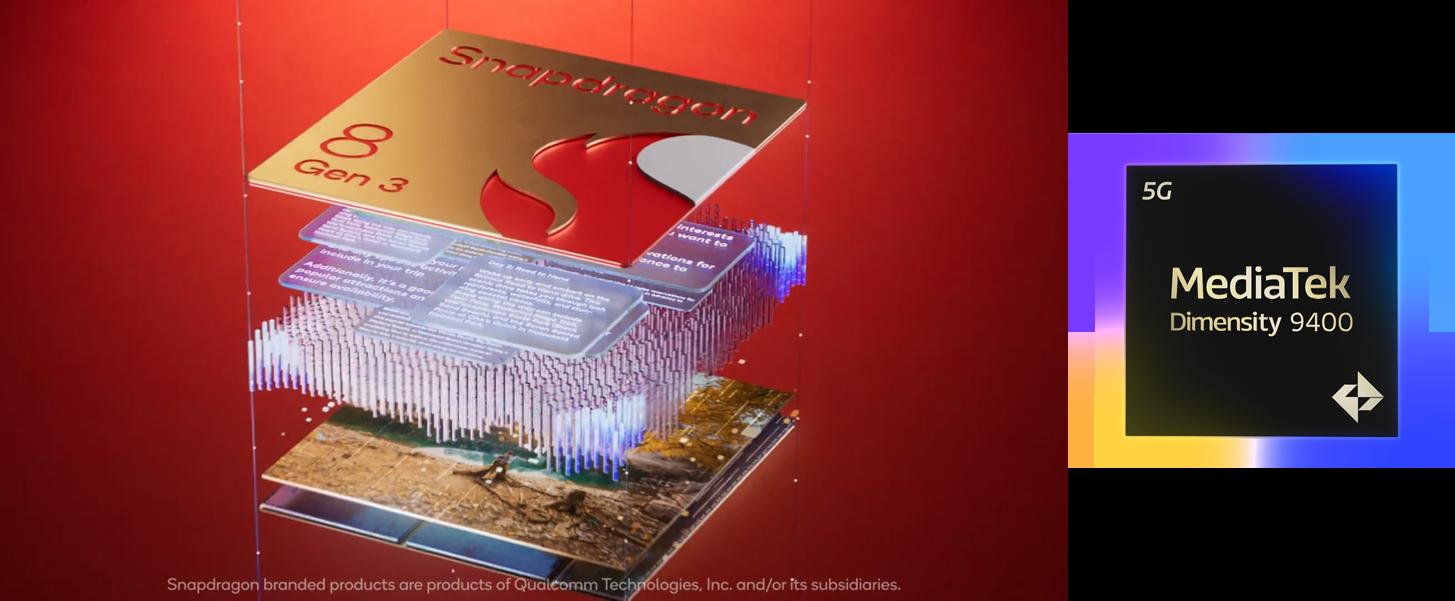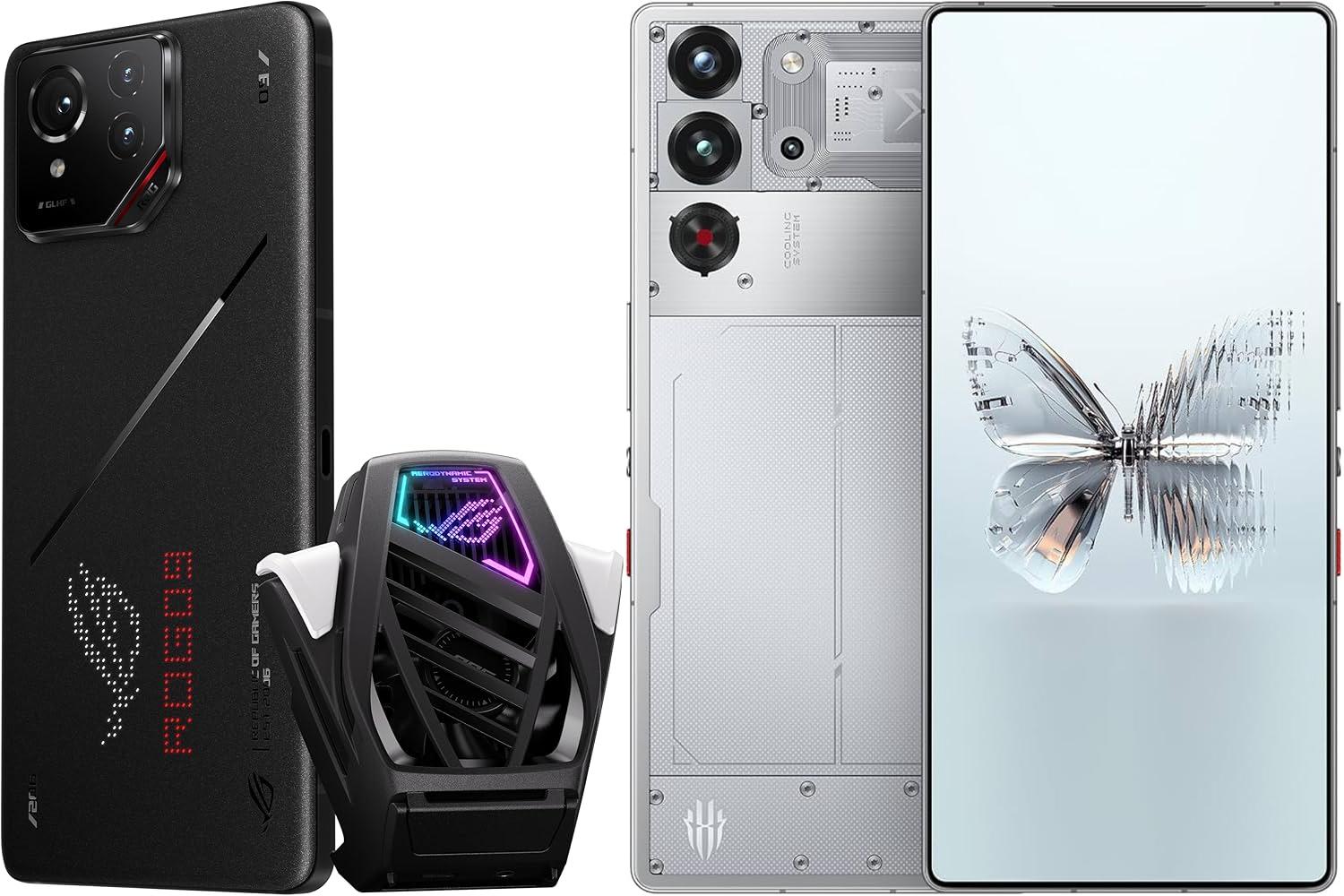Chipset Clash: Snapdragon 8 Gen 3 vs. Dimensity 9400
Introduction
In the fiercely competitive world of mobile technology, the System-on-a-Chip (SoC) is the brain that powers our smartphones, dictating everything from gaming performance and camera capabilities to battery efficiency and AI processing. Qualcomm’s Snapdragon series and MediaTek’s Dimensity line are two of the most prominent players in this arena, constantly innovating to deliver cutting-edge solutions. This article delves into a detailed comparison of two of their flagship offerings: the Qualcomm Snapdragon 8 Gen 3 and the MediaTek Dimensity 9400. We will explore their architectural designs, key specifications, and analyze their respective strengths and weaknesses to determine which chipset offers a superior experience for the modern smartphone user.
Qualcomm Snapdragon 8 Gen 3: A Deep Dive
The Qualcomm Snapdragon 8 Gen 3 is a powerhouse designed to deliver unparalleled performance for flagship smartphones. Built on a 4nm process technology, this 64-bit SoC features an advanced octa-core CPU configuration. It comprises one high-performance Cortex-X4 prime core clocked at up to 3.3 GHz, three Cortex-A720 performance cores at up to 3.15 GHz, two additional Cortex-A720 performance cores at up to 2.96 GHz, and two power-efficient Cortex-A520 cores at up to 2.27 GHz. This intricate cluster design is optimized for a balance of raw power and energy efficiency, allowing the chip to handle the most demanding applications and games with ease.
For graphics, the Snapdragon 8 Gen 3 integrates the Adreno GPU, which operates at 900 MHz. This GPU is renowned for its exceptional gaming performance, supporting advanced features like hardware-accelerated ray tracing, desktop-level rendering capabilities, and a suite of Snapdragon Elite Gaming features. These optimizations ensure incredibly fluid gameplay, realistic visuals, and a highly immersive gaming experience on compatible devices.
Beyond raw CPU and GPU power, the Snapdragon 8 Gen 3 boasts an 8 MB L3 cache, which significantly improves data access speeds for the CPU, further contributing to overall system responsiveness. Qualcomm has also heavily invested in AI capabilities with its Hexagon NPU, delivering substantial improvements in on-device AI processing for tasks such as natural language processing, image recognition, and computational photography. This enables smarter features and more personalized user experiences without relying heavily on cloud processing.
Connectivity is another strong suit, with integrated support for the latest Wi-Fi 7, Bluetooth 5.3, and the advanced Snapdragon X75 5G Modem-RF System, offering blazing-fast download and upload speeds across various 5G networks. The chip also supports high-resolution displays, advanced camera features with improved image signal processing (ISP), and enhanced audio technologies, making it a comprehensive solution for premium mobile devices.
Pros of Snapdragon 8 Gen 3:
•Leading CPU Performance: The Cortex-X4 prime core and optimized cluster deliver top-tier processing power.
•Superior Gaming GPU: The Adreno GPU provides excellent graphics performance, ray tracing, and gaming-specific optimizations.
•Advanced AI Capabilities: Significant improvements in on-device AI processing for various smart features.
•Robust Connectivity: Supports the latest Wi-Fi 7 and advanced 5G modem for fast and reliable connections.
•Mature Ecosystem: Benefits from Qualcomm’s long-standing relationships with OEMs and developers, leading to broad software optimization.
Cons of Snapdragon 8 Gen 3:
•Power Consumption: While optimized, high-performance cores can still lead to higher power consumption under sustained heavy loads compared to more efficiency-focused chips.
•Cost: Typically found in premium flagship devices, contributing to a higher overall smartphone price.
MediaTek Dimensity 9400: A Closer Look
The MediaTek Dimensity 9400 represents MediaTek’s strong push into the ultra-premium smartphone segment, aiming to compete directly with Qualcomm’s top-tier offerings. This chipset is built on a cutting-edge 3nm process technology, which is a significant advantage as it allows for greater transistor density, leading to improved power efficiency and performance. The Dimensity 9400 features a unique
octa-core CPU architecture consisting of one ultra-high-performance Arm Cortex-X925 core clocked at up to 3.62 GHz, three high-performance Arm Cortex-X4 cores at up to 3.3 GHz, and four efficient Arm Cortex-A720 cores at up to 2.4 GHz. This
All-Big-Core design, as MediaTek calls it, aims to maximize performance across all cores, rather than relying on a mix of large and small cores.
For graphics, the Dimensity 9400 incorporates the Arm Immortalis-G925 GPU. This GPU is designed to deliver exceptional gaming performance, with MediaTek claiming significant improvements in ray tracing capabilities and overall graphics rendering. The Immortalis-G925 is built to handle the most graphically demanding mobile games, providing smooth frame rates and realistic visual effects.
MediaTek has also significantly enhanced its AI processing capabilities with the Dimensity 9400, featuring a powerful APU (AI Processing Unit) that supports advanced on-device AI applications. This includes faster and more efficient processing for tasks like image recognition, natural language understanding, and real-time AI-driven enhancements for photography and video. The 2MB L2 cache for the Cortex-X925 core further aids in quick data access and overall system responsiveness.
Connectivity-wise, the Dimensity 9400 supports the latest wireless standards, including Wi-Fi 7 and advanced 5G capabilities, ensuring fast and reliable network connections. MediaTek also emphasizes its display and camera technologies, with features like advanced image signal processors (ISPs) and support for high refresh rate displays, aiming to provide a comprehensive and immersive user experience.
Pros of Dimensity 9400:
•Cutting-Edge Process Technology: The 3nm process offers superior power efficiency and potentially higher sustained performance.
•All-Big-Core CPU Design: Maximizes raw CPU power across all cores, potentially leading to higher benchmark scores in multi-core tests.
•Strong GPU Performance: The Immortalis-G925 GPU is designed for high-end gaming and advanced graphics.
•Enhanced AI Processing: MediaTek’s improved APU delivers robust on-device AI capabilities.
•Competitive Pricing: MediaTek chipsets often enable manufacturers to offer devices at a more competitive price point compared to those with Snapdragon counterparts.
Cons of Dimensity 9400:
•Ecosystem Maturity: While improving, MediaTek’s ecosystem for developer support and software optimization might still lag behind Qualcomm in some areas.
•Brand Perception: Historically, Snapdragon has held a stronger brand perception in the premium segment, which might influence consumer choice.
Head-to-Head Comparison: Performance and Innovation
When directly comparing the Snapdragon 8 Gen 3 and the Dimensity 9400, both chipsets stand as titans in the mobile SoC landscape, each bringing distinct advantages to the table. The Snapdragon 8 Gen 3, with its refined 4nm process and a balanced CPU cluster featuring a powerful Cortex-X4 prime core, offers exceptional single-core performance and a highly optimized gaming experience through its Adreno GPU. Qualcomm’s long-standing expertise in mobile gaming and its robust developer ecosystem often translate to superior software optimization for popular game titles, potentially offering a smoother and more consistent high-frame-rate experience.
On the other hand, the Dimensity 9400 distinguishes itself with its cutting-edge 3nm process technology and an
All-Big-Core CPU design, featuring the powerful Cortex-X925. This architecture could potentially yield higher multi-core benchmark scores and offer superior raw computational power for demanding tasks beyond gaming, such as video editing or complex simulations. The 3nm process is a significant technological leap, promising better power efficiency and sustained performance under heavy loads, which is crucial for preventing thermal throttling during extended gaming sessions. MediaTek’s Immortalis-G925 GPU is also a formidable contender, with a strong focus on ray tracing and advanced graphics rendering, indicating MediaTek’s commitment to high-fidelity mobile gaming.
In terms of AI capabilities, both chipsets are heavily invested in on-device AI processing. Qualcomm’s Hexagon NPU in the Snapdragon 8 Gen 3 has a proven track record, while MediaTek’s improved APU in the Dimensity 9400 is designed to offer competitive performance in AI-driven tasks. The real-world performance difference in AI applications will likely depend on specific software optimizations and the tasks being performed.
Connectivity is another area where both chipsets excel, supporting the latest Wi-Fi 7 and advanced 5G technologies. The choice between the two might come down to the specific modem implementation and regional network compatibility. Historically, Snapdragon has had a slight edge in modem technology and global band support, but MediaTek has been rapidly closing this gap.
Conclusion
The Qualcomm Snapdragon 8 Gen 3 and the MediaTek Dimensity 9400 represent the pinnacle of mobile chipset engineering, each offering a compelling set of features and performance capabilities. The Snapdragon 8 Gen 3 continues to build on Qualcomm’s legacy of delivering top-tier gaming performance, robust AI capabilities, and a mature ecosystem. Its balanced CPU architecture and powerful Adreno GPU make it an excellent choice for users who demand uncompromised speed and graphical fidelity.
Conversely, the Dimensity 9400 showcases MediaTek’s aggressive innovation, particularly with its 3nm process technology and all-big-core CPU design. This chipset is poised to deliver exceptional raw processing power and strong graphics performance, making it a formidable competitor. While MediaTek has historically been seen as a more budget-friendly option, the Dimensity 9400 firmly places them in the premium segment, offering a compelling alternative with its focus on efficiency and raw computational strength.
In conclusion, both chipsets are more than capable of powering the next generation of flagship smartphones, offering incredible performance for gaming, AI, and everyday tasks. The choice between them will likely come down to subtle differences in optimization, specific device implementations, and individual user preferences regarding brand and ecosystem. Regardless of which chipset powers your next smartphone, you can expect a truly high-end mobile experience.
Categories:





